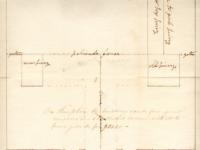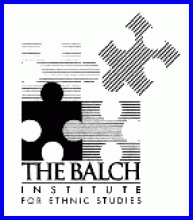This lesson requires students to use primary sources and their own experiences as students to gain insight into the educational system available to African Americans in Philadelphia in the 18th and 19th and centuries. Individually, students will interpret two documents in an effort to explore how anti-slavery organization, Pennsylvania Abolition Society strove to improve the conditions of free blacks through education and moral instruction. The lesson is also designed to acquaint students with the challenges free African Americans faced in obtaining an education.
Education, Free Blacks, and the Pennsylvania Abolition Society in Antebellum Philadelphia
Home ›
Education ›
Unit Plans ›
The Pennsylvania Abolition Society and the Free Black Community ›
Education, Free Blacks, and the Pennsylvania Abolition Society in Antebellum Philadelphia
Education, Free Blacks, and the Pennsylvania Abolition Society in Antebellum Philadelphia
Essential Questions
What role does analysis have in historical construction?
Objectives
- Students will be able to define the type of instruction students in the free black community received by describing and discussing what schools were like.
- Students will be able to recognize the significance and importance of education for the free black community and identify obstacles they faced in accessing education in 18th and 19th century Philadelphia.
- Students will be able to understand the Pennsylvania Abolition Society’s role in educating free blacks by reviewing primary sources and determining that organization’s position in the education of free blacks.
Other Materials
Suggested Instructional Procedures
(Option A)
- Show students the floor plan of Clarkson Hall. Inform students that the floor plan is for one of the first schools for free African Americans in Philadelphia. Teachers should relate pertinent information from Pennsylvania Legacies about the school to students (i.e. opening of school, enrollment, physical size of school and capacity). Teachers should allow students to respond with questions or comments to floor plan. Alternatively, teachers might distribute copies of the floor plan and ask students to sketch out where the various locations of things such as desks might have been placed in the school.
- Using the background readings found in Pennsylvania Legacies, the teacher should give a brief background lecture on the PAS and their involvement in free blacks’ education. Teachers should focus their comments around factors such as the role of the Committee of Education, development of schools, Clarkson Hall, and PAS’s relationship to other schools during this period.
- Distribute Idea Web graphic organizer and handwriting sample to students. Provide students with the context for which the document was produced. Ask students to examine the sample. Using the graphic organizer, instruct students to come up with ideas about the handwriting sample. Teachers should encourage students to think about the following: possible instructional purposes of the handwriting sample (i.e. teaching handwriting, teaching good penmanship). Why is the particular phrase being used for handwriting practice (i.e. moral instruction, inculcation of values,)? What was the likely age of the student practicing writing? Discuss the students’ ideas about the handwriting sample. Ask students to determine whether any of their ideas are related to their own experiences practicing handwriting?
- Ask students what significance it might hold for members of the free black community to have good handwriting. Teachers might encourage students to think of increased employment opportunities, the ability to teach other family members who are illiterate, and to demonstrate the capacity of free blacks to learn.
(Option B)
- Write the words "education" and "free blacks" on the board or on an overhead. Ask students to engage in free or word association with each of these words with regards to free blacks in Philadelphia. Students should say or write down what comes to mind when they see these words. Prompt students with the following questions (can be written on the board or distributed to students in a handout:
- What type of education did free blacks have access to in antebellum 19th century Philadelphia?
- How did Philadelphia anti-slavery organizations help free African Americans obtain an education?
- What significance did education have for the Philadelphia free black community?
- Did free African Americans in Philadelphia face challenges or obstacles to getting an education?
After various associations are worked out, lead students to recognize that education for free African Americans in Philadelphia was achieved through Pennsylvania Abolition Society (PAS).
- Distribute to students a report from the Clarkson Educational Association, Teachers Memos and Reports. Inform students of the document’s context. Teachers can provide a context for the document by reading the background text in Pennsylvania Legacies and the supplementary reading materials online. Instruct students to read the document and inform them that the class will discuss the report. Alternatively, ask a student to volunteer to read the document as the class follows along. After reading the documents, ask students what they think of the report. The following questions might be asked:
- Why do you believe that the students have no desks?
- What conclusions can you draw from both incidents with the white boys?
- Analyze the point of view of the teacher and suggest what might be her opinion of the questions above?
- Ask students how the incidents related in the teachers’ report might pose challenges to free blacks obtaining an education. Teachers should help students to make connections between the information contained in the teachers’ report and possible obstacles to free blacks’ education. Ask students what other challenges might free blacks have faced with regard to education? How might the PAS have helped them overcome these issues?
Extension:
- Request that students come up with a plan or way to achieve some of the educational objectives they believe the PAS had for free African Americans. Students can either write this plan out on paper or respond verbally.
- Ask students to imagine that they are teachers of the free black community in Philadelphia. Instruct students to create a brief lesson for their students. Their lesson should be based on the skills, education, and training they believe that free blacks would need most.
- Ask students to imagine that they are members of the free black community in Philadelphia. Instruct students to write a letter to the PAS society indicating the educational needs of free African Americans. This can include material items (such as school books, desks, slates), instruction in particular subjects, vocational training, morality edification, etc.
Vocabulary
School: an institution for education children
Literate: able to read and write
Plans in this Unit
Grade Level
Middle School
High School
Duration
One class period
Standards/Eligible Content
8.1.9.B
8.1.12.B
8.1.12.C
8.1.U.C
About the Author
This unit was created by Kim Gallon. Updated for SAS by Danielle J. Gross, Education Intern, Historical Society of Pennsylvania.
Related
Attention Teachers!
Let us know how you used this plan and be featured on our site! Submit your story here.


